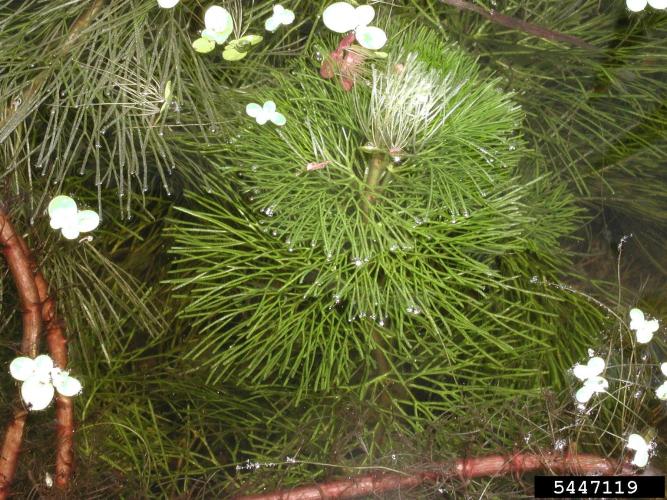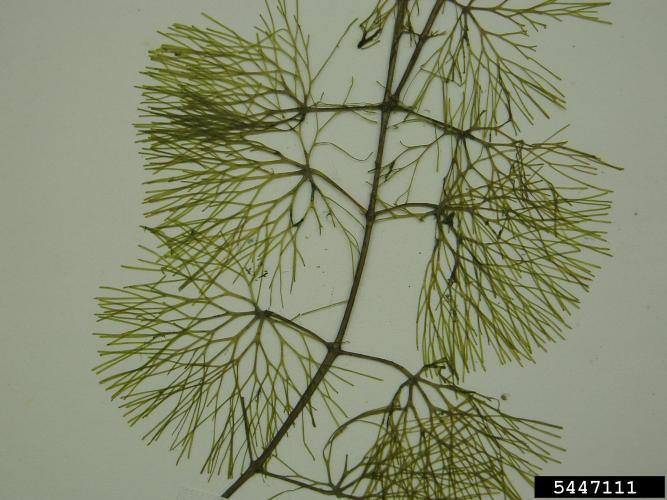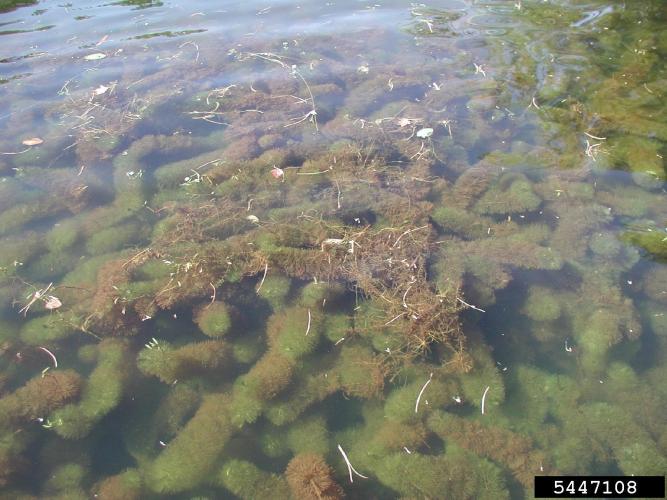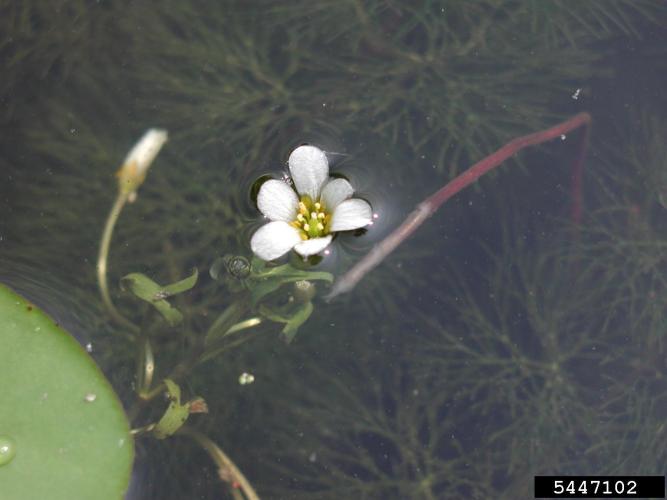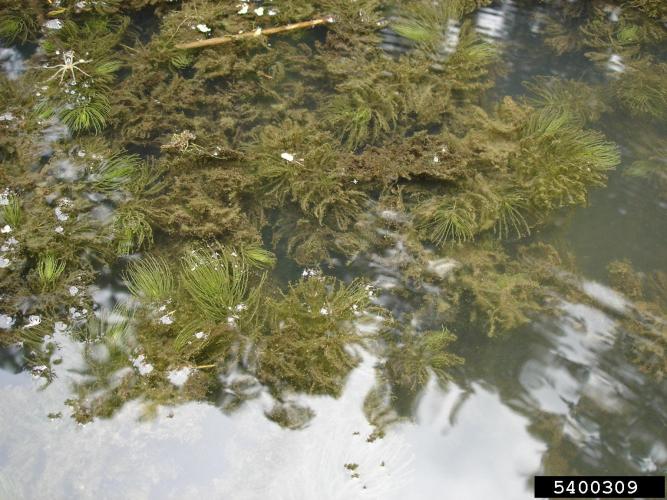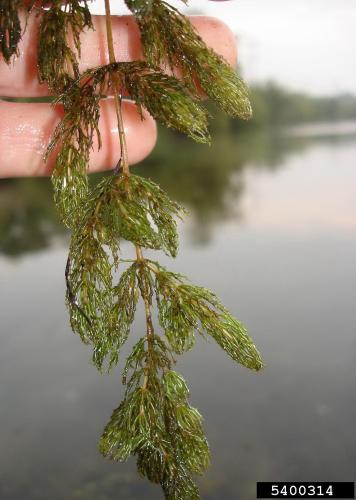Fanwort
Identification
Appearance
Fanwort is a submerged herbaceous plant characterized by its iconic fan-like appearance. Stems are commonly less than 3 meters but can grow up to 10 meters in optimal conditions.
Foliage
The submerged leaves are opposite and have a whorled pattern which are divided into linear fan-like segments and carry a sticky mucus. There are also floating shield shaped leaves above the water which appear during flowering season.
Flowers
Small, solitary white, yellow, or purple flowers are found from May to September above the water.
Fruit
After pollination small, elongate seed pods are developed contain one to three seeds. These seeds are small and green with brown spots and easily carried by waterways
Biology
Habitat
Clear and permanent standing shallow water (around 3 meters) is a preferred habitat for fanwort.
Life Cycle
Fanwort is a resilient plant and is primarily spread through vegetative pieces either cut or ripped from existing plants. Fanwort can also spread through seeds which are produced through fertilization and subsequent release into the waterways. Vegetative cuttings can survive without rooting for up to 8 weeks in calm waters and can even withstand periods of transfer out of water.
Ecological Threat
Fanwort is a fast growing highly competitive plant that has the potential to out-compete native vegetation. Dense mats of this plant can create issues for human recreation as well as reduce oxygen levels within the aquatic environment when the large populations die off, affecting oxygen dependent creatures.
Vermont Distribution
While it has been confirmed to be in Vermont, there are currently no extensive infestations.
How You Can Help
For most aquatic invasive species, humans are the primary vector of transport from one waterbody to another. Many of these nuisance plants and animals can be unknowingly carried on fishing gear, boating equipment, or in very small amounts of water in a watercraft. The easiest and most effective means to ensure that you are not moving aquatic invasive species is to make sure that your vessel, as well as all your gear, is drained, clean, and dry.
CLEAN off any mud, plants, and animals from boat, trailer, motor and other equipment. Discard removed material in a trash receptacle or on high, dry ground where there is no danger of them washing into any water body.
DRAIN all water from boat, boat engine, and other equipment away from the water.
DRY anything that comes into contact with the water. Drying boat, trailer, and equipment in the sun for at least five days is recommended. If this is not possible, then rinse your boat, trailer parts, and other equipment with hot, high-pressure water.
Citations
Photo Credit
5447102, 5447119, 5447108,5447111: Leslie J. Mehrhoff, University of Connecticut, Bugwood.org
Information Credit
Roberts, J. & Florentine, S. (2022) A global review of the invasive aquatic weed Cabomba caroliniana [A. Gray] (Carolina fanwort): Current and future management challenges, and research gaps. Weed Research, 62, 75–84. Available from: https://doi.org/10.1111/wre.12518
Larson, J. L. Cao, L. Berent, and S. Iott, 2025, Cabomba caroliniana A. Gray: U.S. Geological Survey, Nonindigenous Aquatic Species Database, Gainesville, FL, and NOAA Great Lakes Aquatic Nonindigenous Species Information System, Ann Arbor, MI, https://nas.er.usgs.gov/queries/greatlakes/FactSheet.aspx?Species_ID=231, Revision Date: 8/8/2024, Access Date: 6/12/2025
Peconic Estuary Program. 2006. Fanwort Cabomba caroliniana. Invasive Species in thePeconics. Peconic Estuary Program, Yaphank, New York.
